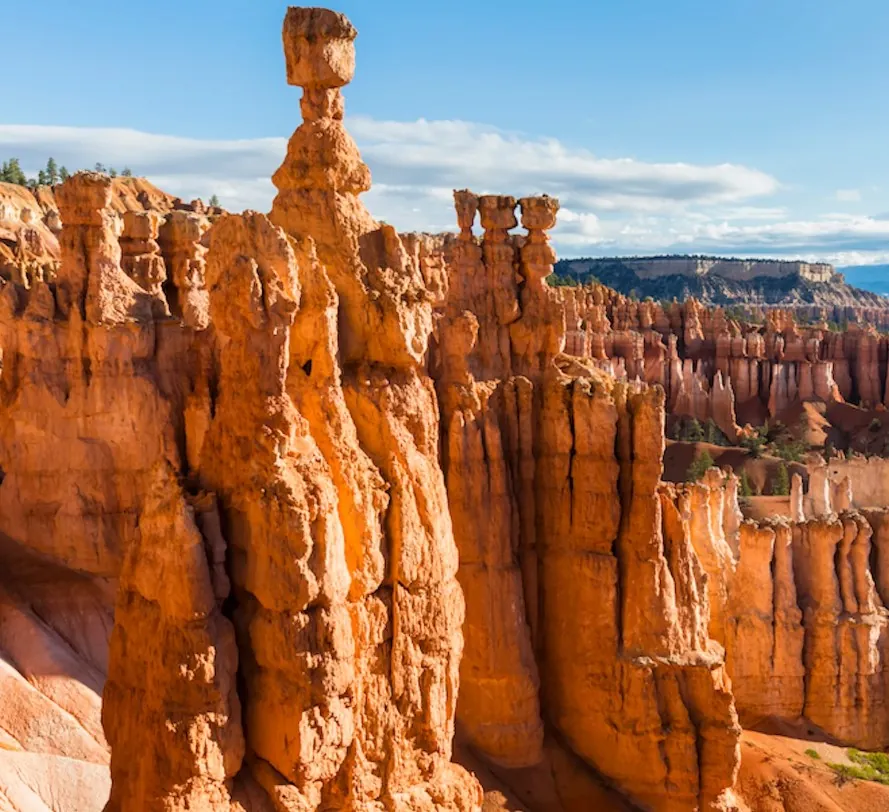If you have ever felt that itch to explore landscapes that feel almost unreal, Bryce Canyon is one of those places where reality and imagination blur. Picture standing at the edge of a cliff, surrounded by hoodoos that stretch to the sky, painted in hues of orange, red, and white.
It’s like nature decided to have some fun, sculpting these rock formations over millions of years into something breathtaking.
For me, hiking here goes beyond the physical journey. It is about the moments where you stop mid-trail, not just to catch your breath but to take in a view that makes you feel small in the best way possible.
It is the feeling of walking among ancient bristlecone pines or descending into the amphitheater, each step echoing a connection to the wild desert that so many travelers talk about but only truly understand once they are here.
So if you are like me—a curious, eager hiker who does not mind getting some dust on your boots—these trails in Bryce Canyon offer a chance to experience the raw, rugged beauty of Utah’s desert. No need for fanfare, just an invitation to dive into an adventure where the land itself is the storyteller.
These Are the Trails With Best Views
- Rim Trail
- Queen’s Garden Trail
- Navajo Loop Trail
- Peek-A-Boo Loop Trail
- Bristlecone Loop
- Fairyland Loop Trail
- Mossy Cave Trail
- Tower Bridge Trail
- Hat Shop Trail
1. Rim Trail
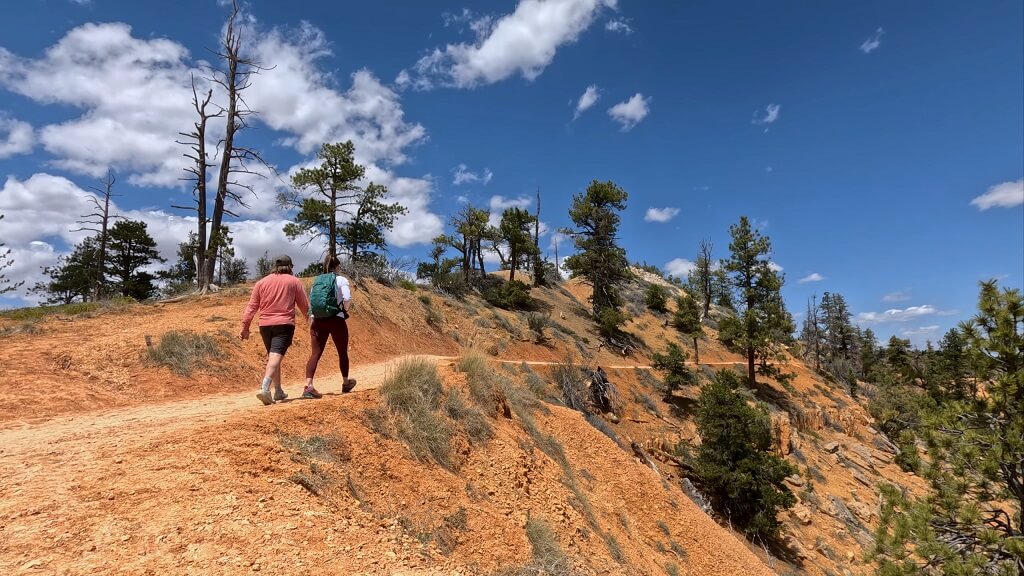
| Distance | 4.7 miles (one-way) |
|---|---|
| Elevation Gain | 1,754 feet |
| Difficulty | Moderate |
| Hiking Time | 3 to 4 hours |
| Trailheads | Fairyland Point or Bryce Point |
Walking along the Rim Trail in Bryce Canyon feels almost like strolling through a dreamscape. Starting early in the morning, I remember the chill in the air and how the rising sun gradually warmed the rocks, painting them in every shade of red and orange you can imagine.
The path winds along the top edge of the Bryce Amphitheater, offering panoramic views of hoodoos that seem to defy logic.
There were moments when I had to stop, not just to catch my breath, but because the sheer scale and beauty of the amphitheater were overwhelming. Sunrise and Sunset Points were especially memorable, with the morning light bouncing off Thor’s Hammer and the Silent City, giving the formations an almost mystical glow.
As I walked, I noticed benches thoughtfully placed along the trail. They provided the perfect spot to sit, soak in the views, and feel the quiet hum of the wilderness. I saw photographers with their tripods, families pointing out different rock formations, and solo hikers like me, all lost in their own moments of awe.
The free park shuttle saved me a long return trek, making it easy to explore without backtracking.
2. Queen’s Garden Trail
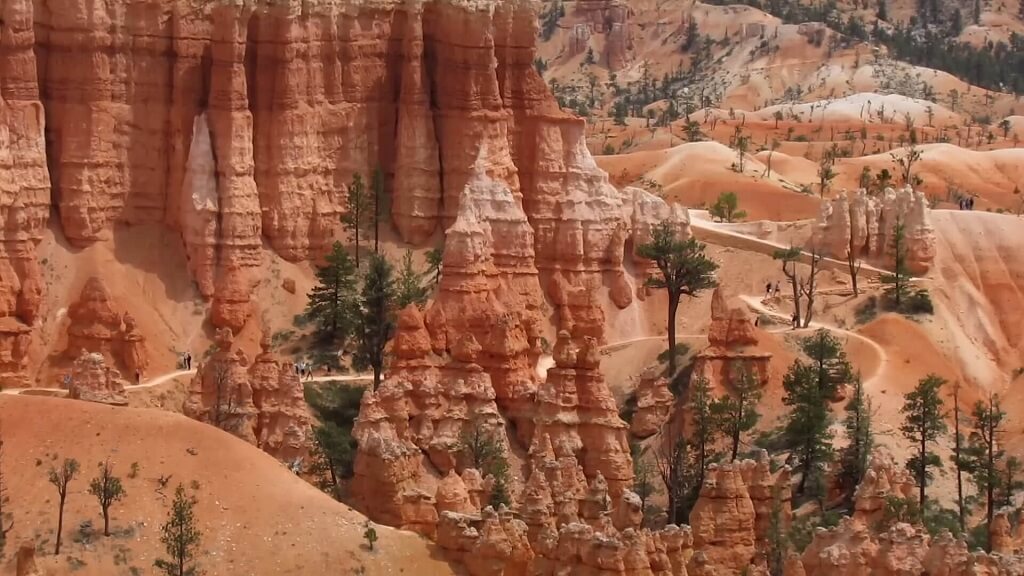
| Distance | 1.8 miles (roundtrip) |
|---|---|
| Elevation Gain | 450 feet |
| Difficulty | Easy to Moderate |
| Hiking Time | 1 to 2 hours |
| Trailhead | Sunrise Point |
Descending into the canyon on the Queen’s Garden Trail feels like stepping into a secret world, one sculpted by time itself. Starting from Sunrise Point, the path takes you down through a maze of hoodoos, and each turn reveals something new. The morning air smelled crisp, and the first rays of light cast playful shadows across the ridges.
What struck me most was how the trail led me so close to the rock formations. Hoodoos stood tall and proud, with colors that changed from fiery reds to soft pinks depending on the light. At times, I found myself in the company of clusters of pine trees clinging to life in the rock crevices, adding a touch of green to the otherwise arid landscape.
Midway, I found myself at the namesake “Queen’s Garden,” where a hoodoo resembling Queen Victoria sits regally on her stone throne. It was one of those moments where you pause, not just for a photo, but because the scene feels so perfectly surreal.
3. Navajo Loop Trail
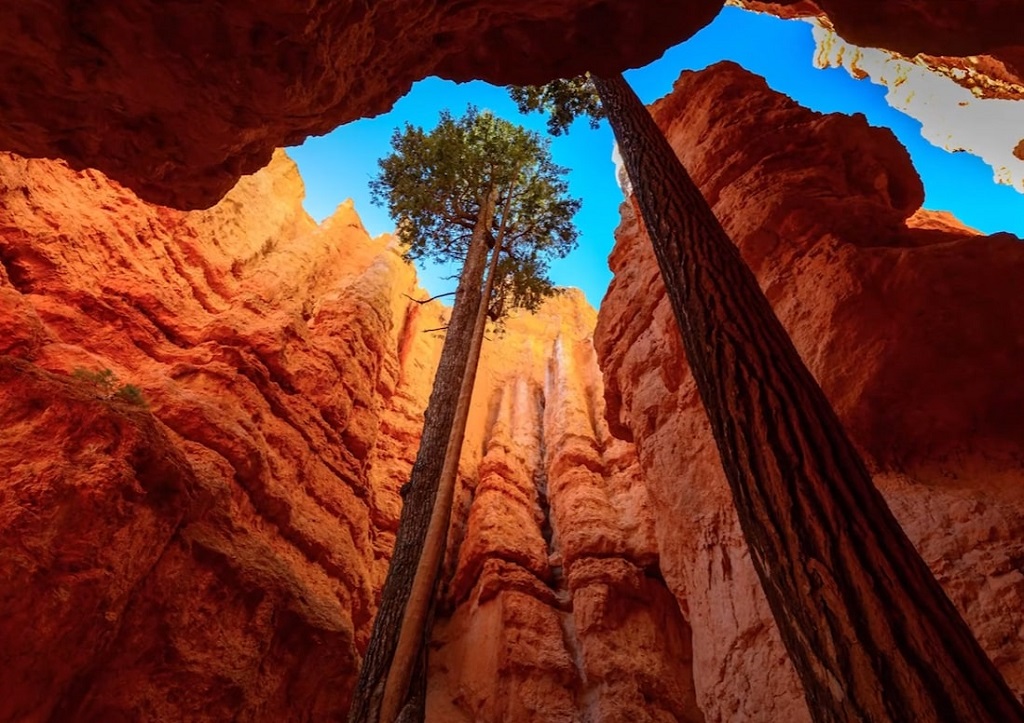
| Distance | 1.3 miles (loop) |
|---|---|
| Elevation Gain | 550 feet |
| Difficulty | Moderate |
| Hiking Time | 1 to 1.5 hours |
| Trailhead | Sunset Point |
The Navajo Loop Trail starts at Sunset Point, and it immediately plunges into a world where nature’s power is on full display. I remember the descent through the steep, winding switchbacks into the depths of the Bryce Amphitheater—heart-pounding, sure, but absolutely unforgettable. Walls of orange rock towered over me, with the famous section called Wall Street showcasing towering fins that nearly touch the sky.
Once you reach the bottom, the trail weaves through narrow canyons and brings you face-to-face with some of the most stunning formations in Bryce. I could not help but stand in awe at the immense Douglas fir trees that have somehow found a way to grow between the canyon walls, defying the elements.
Passing Thor’s Hammer, a well-known hoodoo that seems to balance impossibly on a narrow pedestal, felt like meeting an old legend in person.
The climb back up is a challenge, but with every upward step, I felt the canyon closing behind me, and I kept glancing over my shoulder for one last glimpse. It is one of those hikes that grips you from start to finish, with each corner offering a new perspective on Bryce Canyon’s strange and wonderful rock formations.
You finish the loop breathless but with a head full of unforgettable images.
4. Peek-A-Boo Loop Trail
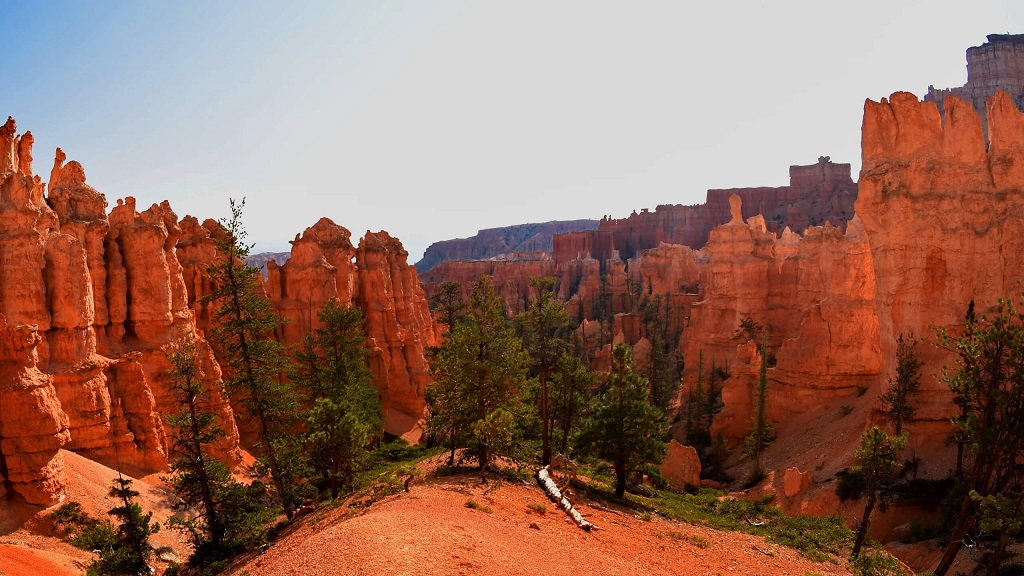
| Distance | 5 miles (loop) |
|---|---|
| Elevation Gain | 1,555 feet |
| Difficulty | Strenuous |
| Hiking Time | 3 to 4 hours |
| Trailhead | Bryce Point |
The Peek-A-Boo Loop Trail is not one you take lightly. Starting at Bryce Point, the trail immediately introduces you to steep descents and climbs that make you work for every breathtaking view.
I found myself surrounded by the famous hoodoo formations that seem to stretch endlessly, with sections that felt like walking through nature’s cathedral.
As I hiked, I passed iconic formations like the Wall of Windows and The Cathedral. These sights feel larger than life, and every turn seems to offer a moment that stops you in your tracks.
The trail itself is a rollercoaster of ups and downs, winding through narrow passages and expansive open spaces where you can pause and soak in the silence and grandeur of Bryce Canyon.
5. Bristlecone Loop Trail
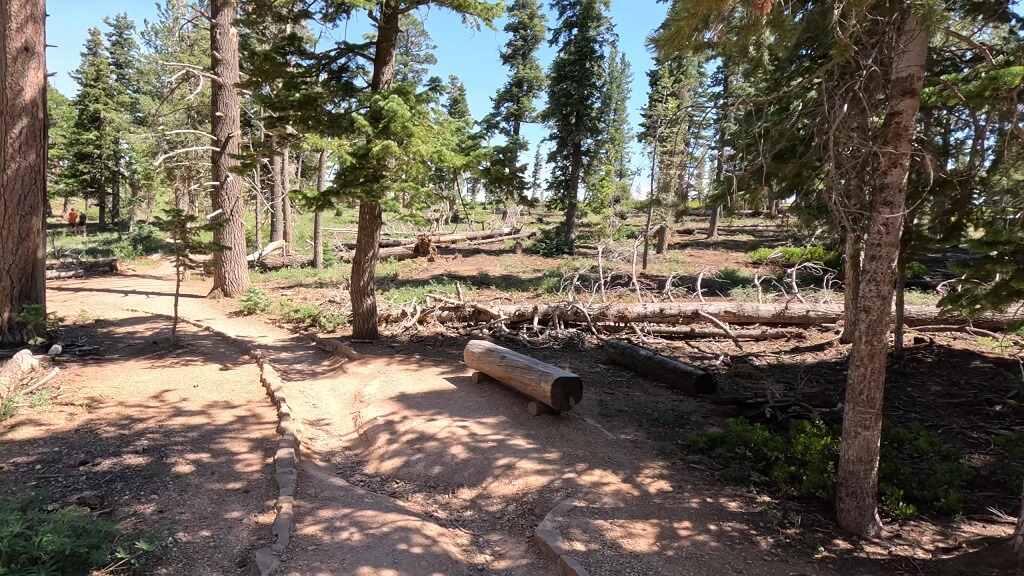
| Distance | 1 mile (loop) |
|---|---|
| Elevation Gain | 200 feet |
| Difficulty | Easy |
| Hiking Time | 30 to 45 minutes |
| Trailhead | Rainbow Point |
Starting at Rainbow Point, this trail is a refreshing change, taking you through a quiet forest of ancient bristlecone pines. Some of these trees are almost 1,800 years old, and they stand twisted and resilient, holding their own against harsh winds and the test of time.
As I made my way along the loop, the cool, crisp air at 9,100 feet provided a welcome break from the heat lower in the canyon. The trail’s gentle incline winds through blue spruce, Douglas firs, and white firs, giving off a fresh, piney scent.
There were also moments where the forest opened up, revealing stunning vistas over the canyons and plateaus stretching into the distance.
6. Fairyland Loop Trail
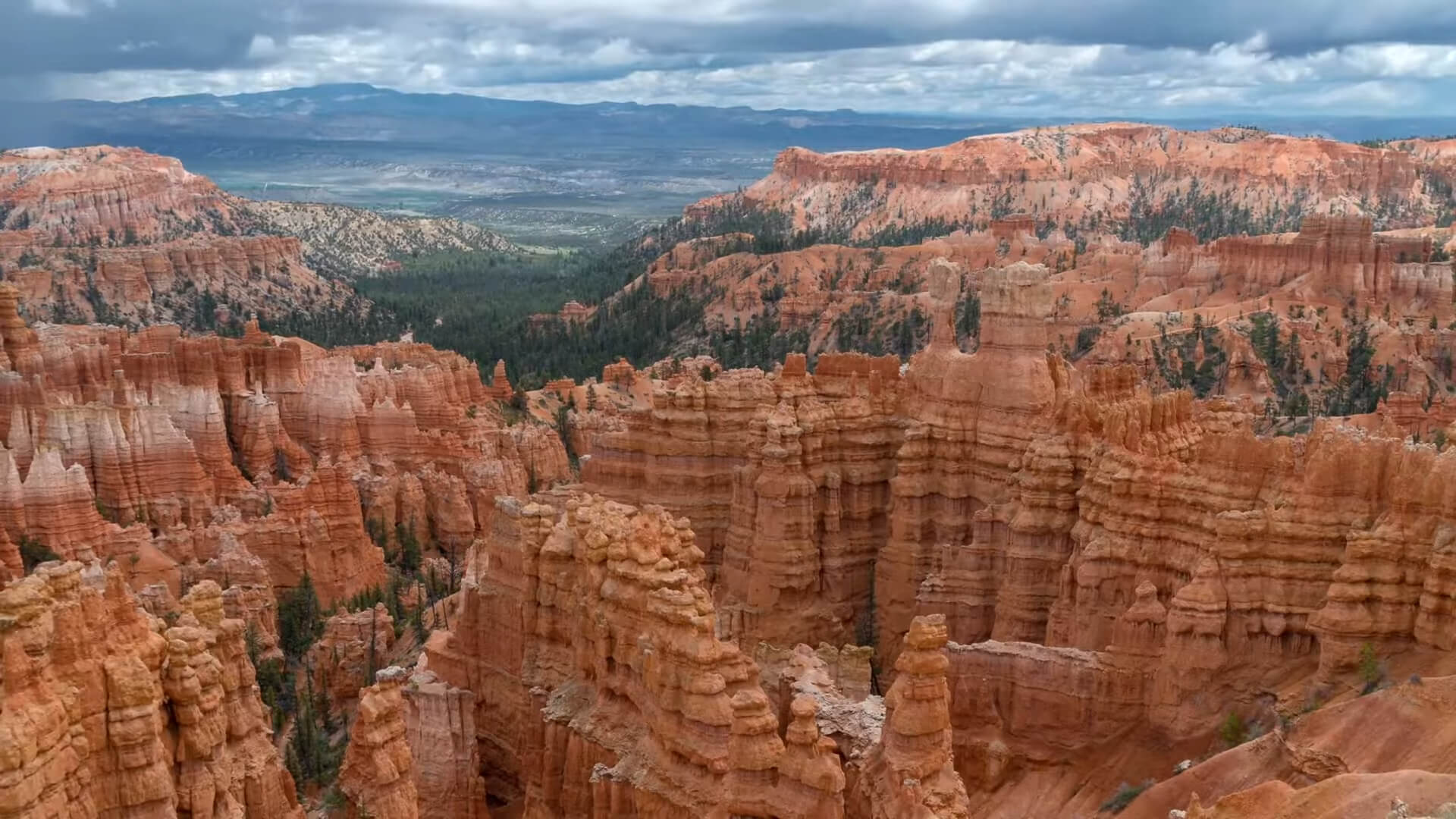
| Distance | 8 miles (loop) |
|---|---|
| Elevation Gain | 2,300 feet |
| Difficulty | Strenuous |
| Hiking Time | 4 to 5 hours |
| Trailhead | Fairyland Point |
The Fairyland Loop Trail is one of Bryce Canyon’s most adventurous routes, where every mile takes you deeper into the hoodoo wonderland. Starting at Fairyland Point, the trail is a long trek, but it rewards you with up-close encounters with formations that look like they belong in a fantasy novel.
Walking through the canyon feels like being transported to another world, with towering spires of red and orange rock surrounding you.
I found the trail demanding but endlessly rewarding. It winds through rolling terrain, and there are moments where the landscape stretches as far as you can see, with plateaus and colorful cliffs blending into the horizon.
The Chinese Wall, a vibrant ridge of stone, was one of the highlights that made the effort feel worthwhile. Along the way, bristlecone pines stand like ancient guardians of this surreal place.
The loop is no joke—it pushes your endurance, especially with its substantial elevation changes. But for those ready to put in the work, the scenery is unmatched. It felt like a personal journey, with few crowds, just me, the sweeping views, and the whisper of the canyon winds.
7. Mossy Cave Trail
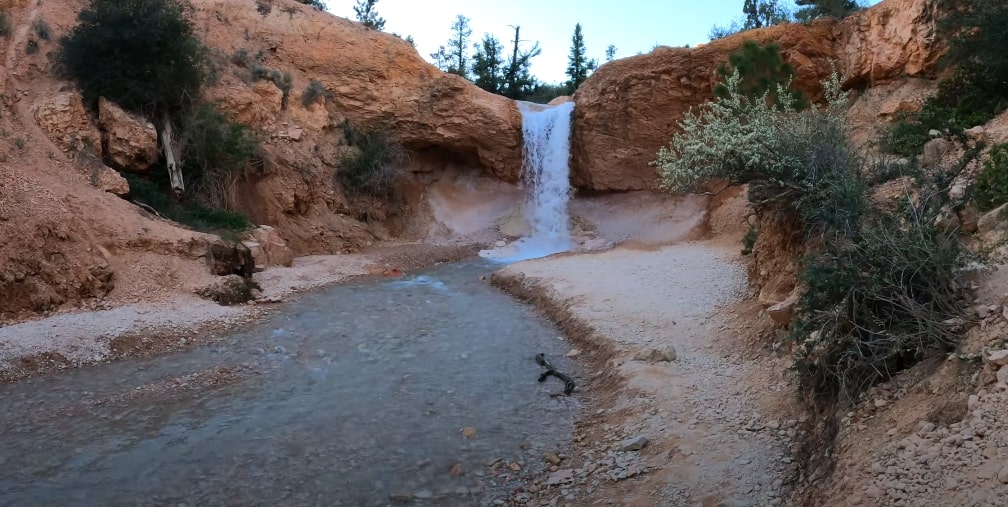
| Distance | 0.9 miles (roundtrip) |
|---|---|
| Elevation Gain | 300 feet |
| Difficulty | Easy |
| Hiking Time | 30 to 45 minutes |
| Trailhead | Mossy Cave Trailhead, Highway 12 |
The Mossy Cave Trail stands out because it offers a unique experience, blending a short and easy hike with fascinating sights. This trail is perfect for families or anyone wanting to see some impressive features without venturing too deep into the park. Starting along Highway 12, the hike follows a river that cuts through the landscape, leading to a small but beautiful waterfall.
I loved the way this trail effortlessly introduces you to Bryce Canyon’s natural wonders. The waterfall was an unexpected delight, especially with the sound of rushing water echoing off the surrounding cliffs.
Further up the trail, the actual “Mossy Cave” comes into view—a moist grotto where moss clings to the rock, creating a cool, shaded space that contrasts sharply with the arid desert environment outside.
The scenery along this trail includes hoodoos rising dramatically above the river, and depending on the season, icicles may hang from the cave’s overhang. It is a quick and rewarding stop, great for stretching your legs and getting a taste of Bryce Canyon’s charm, even if you are short on time.
8. Tower Bridge Trail
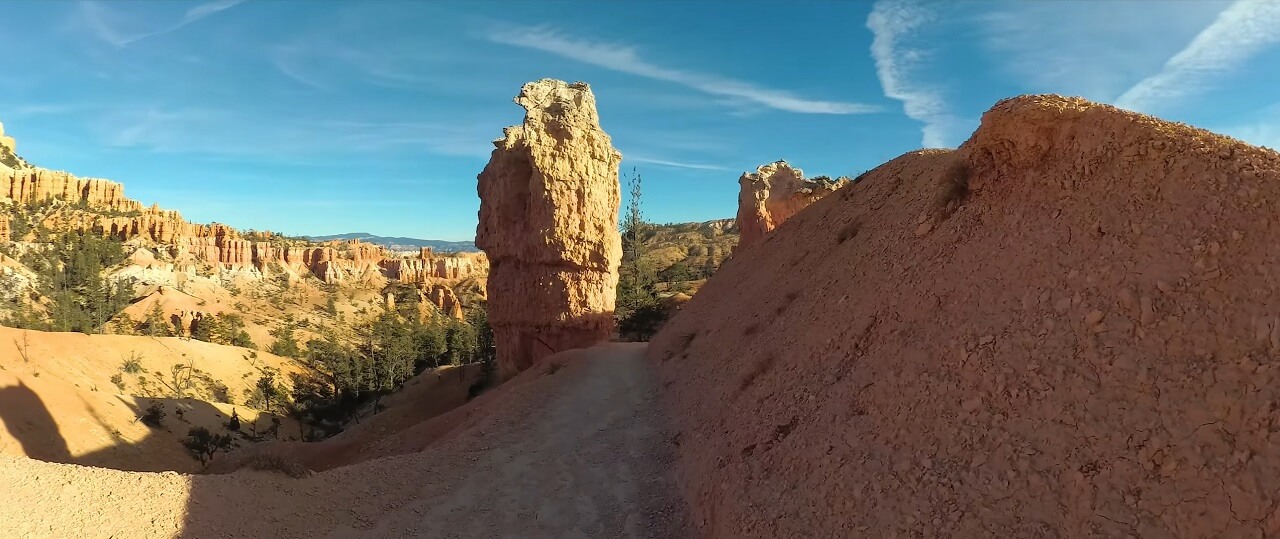
| Distance | 3 miles (roundtrip) |
|---|---|
| Elevation Gain | 800 feet |
| Difficulty | Moderate |
| Hiking Time | 2 to 3 hours |
| Trailhead | Sunrise Point |
The Tower Bridge Trail starts at Sunrise Point and offers a fantastic journey into the lesser-seen areas of Bryce Canyon. This moderate hike feels like stepping into a stone labyrinth, where colorful rock formations and towering pines surround you. The trail descends steadily, with each step bringing you closer to the canyon floor.
One of the highlights, of course, is the Tower Bridge formation itself, named for its striking resemblance to the famous London landmark. Reaching this natural wonder was a moment to pause and marvel at nature’s craftsmanship.
The surrounding area features bristlecone pines, some standing defiantly against erosion, their twisted shapes adding to the scene’s sense of ancient history.
The hike also passes by a section called the Chinese Wall, a long ridge that stands out with its intricate patterns. The trail requires some effort, especially on the return climb, but it never feels overwhelming. It is a hike that invites you to slow down, look closely, and appreciate the many details hidden among Bryce Canyon’s rugged beauty.
9. Hat Shop Trail
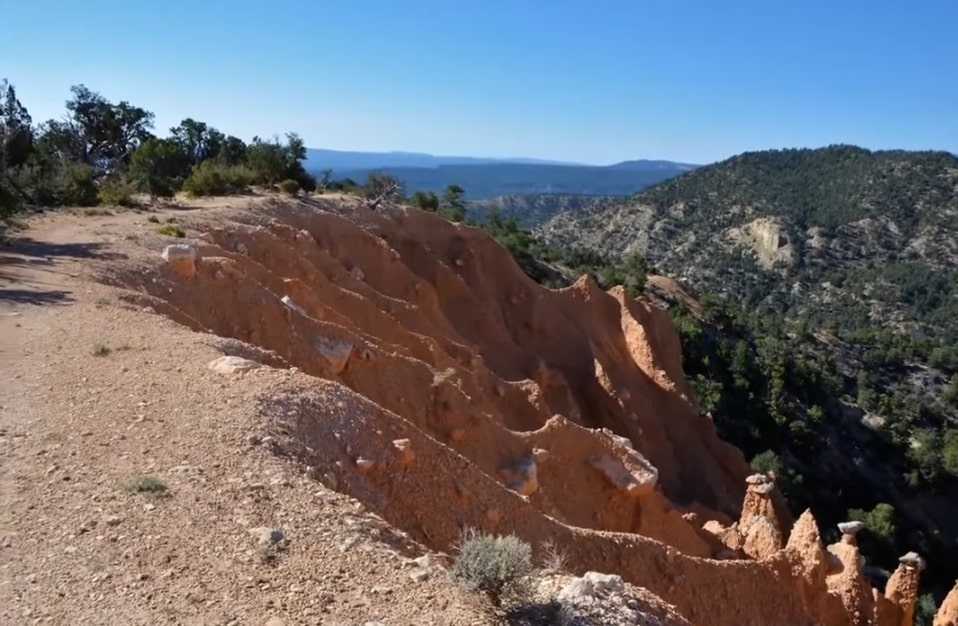
| Distance | 4 miles (roundtrip) |
|---|---|
| Elevation Gain | 1,400 feet |
| Difficulty | Moderate to Strenuous |
| Hiking Time | 3 to 4 hours |
| Trailhead | Bryce Point |
Hiking the Hat Shop Trail feels like a true adventure into Bryce Canyon’s wilderness. Starting at Bryce Point, the path takes you down a steep series of switchbacks, where each step carries you deeper into the canyon’s heart.
The hike’s name comes from the clusters of balanced-rock hoodoos near the end of the trail, each one resembling a collection of hats perched atop slender rock pedestals.
The descent offers sweeping views of the surrounding cliffs and hoodoos, but the real surprise awaits at the Hat Shop itself. These formations seem almost impossible, as if someone placed giant stone hats atop delicate columns just to see if they would stay. It is an area that leaves you in awe of nature’s architectural skills.
Coming back up is where the trail tests your endurance. The climb is steady and strenuous, but stopping to catch your breath also gives you a chance to appreciate the panoramic views unfolding behind you.
The Hat Shop Trail delivers an intimate experience with Bryce Canyon’s iconic geology, and the workout is well worth it for those who crave a deeper connection to the park’s rugged beauty.
Tips for Hiking in Bryce Canyon
Essential Gear
- Hiking Boots: Sturdy, ankle-supporting boots are a must for navigating uneven terrain and rocky descents.
- Layered Clothing: Mornings and evenings are chilly, but daytime temperatures can rise quickly. Opt for moisture-wicking fabrics.
- Sun Protection: Bryce Canyon’s elevation and clear skies mean strong sun exposure. Wear a wide-brimmed hat, sunglasses, and apply sunscreen regularly.
- Hiking Poles: Helpful for steep trails, especially on descents like Wall Street on the Navajo Loop.
Keep in Mind That the Altitude is High
With elevations ranging from 7,000 to 9,000 feet, altitude sickness can affect some hikers. Take it slow and listen to your body.
Seasonal Hiking Guide
Winter (December to February)
- Trail Accessibility: Some trails may be icy or closed due to snow, but the Rim Trail often remains open. Winter transforms the hoodoos into stunning snow-capped wonders.
- Precautions: Dress in layers, wear traction devices, and watch for slippery conditions.
Spring (March to May)
- Trail Conditions: Melting snow can make trails muddy, but wildflowers begin to bloom. The weather is unpredictable, so pack accordingly.
- Wildlife Sightings: Spring is a great time to spot deer and early migratory birds.
Summer (June to August)
- Heat and Crowds: Temperatures can soar, and the park sees peak visitation. Start hikes early to avoid the afternoon heat and crowds.
- Thunderstorms: Afternoon thunderstorms are common. Be aware of weather forecasts and avoid exposed areas during storms.
Fall (September to November)
- Milder Weather: Fall brings cooler temperatures and fewer visitors. The aspens turn gold, adding a new layer of beauty to the landscape.
- Trail Options: Most trails remain open, but daylight hours are shorter. Plan hikes to finish before dark.
Wildlife and Plant Life
Animals You Might See
- Mule Deer: Commonly seen grazing near the Rim Trail, especially in the early morning.
- Peregrine Falcons: These impressive birds of prey can sometimes be spotted soaring above the cliffs.
- Other Wildlife: Keep an eye out for foxes, chipmunks, and various bird species.
Unique Plant Life
- Bristlecone Pines: These ancient trees can live for thousands of years. The Bristlecone Loop Trail at Rainbow Point provides an up-close view.
- Desert Flora: Sagebrush, junipers, and pinyon pines are common throughout the park, creating a unique high desert ecosystem.
Geology and History of Bryce Canyon
Geology of the Hoodoos
- Formation Process: The hoodoos are formed by a combination of frost wedging and erosion. Water seeps into cracks, freezes, and expands, breaking the rock apart.
- Layers of Rock: Bryce Canyon’s rocks are part of the Claron Formation, rich in limestone, siltstone, and dolomite.
Historical Significance
- Paiute Heritage: The Paiute people have lived in the region for centuries, with stories and legends about the hoodoos being petrified beings. The park is culturally significant to them.
- Discovery and Protection: Settlers arrived in the 1800s, and Bryce Canyon became a National Monument in 1923 before gaining National Park status in 1928.
Photography Tips
Best Viewpoints
- Sunrise Point: Ideal for early morning shots with hoodoos lit by golden light.
- Bryce Point: Offers panoramic views perfect for wide-angle lenses.
- Natural Bridge: A fantastic spot for capturing the contrast of the arch against the sky.
Lighting and Composition
- Golden Hour: The hour after sunrise and before sunset gives the most flattering light.
- Avoiding Crowds: Arrive early or choose less popular viewpoints. Midday light can be harsh, so plan for early or late in the day.
Nearby Attractions
Red Canyon
- Location: Just 10 miles from Bryce Canyon, Red Canyon features stunning red rock formations and offers several hiking and biking trails.
Kodachrome Basin State Park
- Distance: About 40 minutes from Bryce. The park boasts colorful sandstone chimneys and unique geological features.
Scenic Drives
- Highway 12: Considered one of the most beautiful drives in the country, it provides breathtaking views and access to nearby state parks and towns.
Camping and Accommodation
Campgrounds in Bryce Canyon
- North Campground: Open year-round, offering sites for tents and RVs. First-come, first-served basis.
- Sunset Campground: Open April to October, near Sunset Point, with reservation options available.
Nearby Lodges and Hotels
- The Lodge at Bryce Canyon: Historic lodge located inside the park, offering rustic rooms and easy access to trails.
- Bryce Canyon City: A nearby town with various hotels, motels, and restaurants. Plan to book in advance during peak season.
Click here to find the full list of best hotels in this area.
FAQs
What is the best time of year to visit Bryce Canyon?
The best time to visit Bryce Canyon is in the late spring (May to early June) or early fall (September to October). During these months, the weather is usually mild, and the crowds are more manageable compared to the peak summer season. Spring brings wildflowers, while fall showcases golden aspen trees. Keep in mind that Bryce Canyon can be very cold in the winter and extremely hot in the summer, so planning around weather conditions is crucial.
Is Bryce Canyon safe to hike in winter?
Yes, Bryce Canyon is safe to hike in winter if you take the right precautions. Snow and ice can make trails slippery, so traction devices like microspikes and hiking poles are recommended. The Rim Trail and the Bristlecone Loop Trail are usually safer options in winter, but it is always good to check trail conditions at the visitor center before heading out.
Are pets allowed on the hiking trails in Bryce Canyon?
Pets are allowed only on paved trails and viewpoints, like the Rim Trail between Sunset and Sunrise Points. They must be leashed and are not permitted on most of the unpaved hiking trails, like Navajo Loop or Peek-A-Boo Loop. If you’re traveling with your pet, make sure to review the park’s pet policy and bring supplies to clean up after them.
Do I need a permit to hike in Bryce Canyon?
You do not need a permit for most day hikes in Bryce Canyon. However, if you are planning to do overnight backcountry hiking, like the Under-the-Rim Trail, you will need to obtain a backcountry permit. These permits can be reserved in advance or picked up at the visitor center. Make sure to familiarize yourself with the park’s backcountry rules and regulations before your hike.
Last Words
Wandering through this incredible landscape feels like stepping into a place where nature’s artistry is on full display. The hoodoos, cliffs, and wide-open skies come together to create moments that are both humbling and awe-inspiring.
Each trail leaves you with a deeper appreciation for the beauty and power of the natural world.
Pack your essentials, plan your adventure, and take a moment to breathe it all in. Bryce Canyon is ready to leave a lasting impression, one view at a time.

